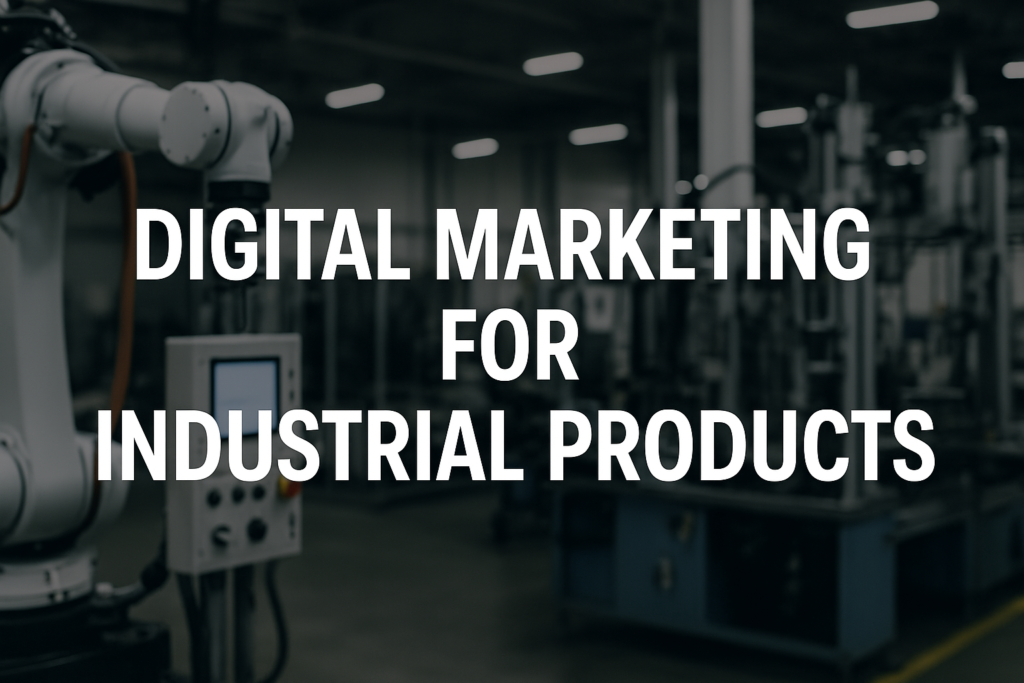Digital marketing for industrial products: A strategic playbook
Most of the blogs in this domain forget that the industrial sector isn’t selling impulse buys. Your customers are engineers, procurement teams etc. These are the decision-makers who evaluate solutions over months (or years ). Hence the information for digital marketing for industrial Products remains stuck in a generic, B2C style.
Why Industrial Marketing Demands a Different Playbook
Industrial buying cycles are 7.3X longer than B2C purchases and 5-10 stakeholders are involved in decisions. Your content must address layered technical requirements, compliance standards, and ROI calculations while surviving brutal internal scrutiny.
Let’s understand the industrial product buyers’ journey. ( which you can adjust to your product or service)
The Industrial Buyer’s Journey: Mapping Content to Reality
Stage 1: Problem identification
A plant manager notices recurring equipment failures. Their team starts researching the root cause and potential solutions. Most companies usually miss that 83% of industrial buyers use niche forms and technical papers early in their research.
Your Approach: Publish failure mode analysis (e.g. why [industry-specific parts] fail in a high-temperature environment. Or sponsor visibility in community forms like Eng- tips etc.
Stage 2 solution evaluation
73% of technical buyers reject vendors who can’t provide machine-readable data like PDF catalogues.
Real-life example
ValveTech Co. increased qualified leads by 40% by:
- Converting spec sheets into interactive configurators
- Adding 3D model downloads (STEP, IGES) for direct CAD integration
- Embedding real-time compliance documentation (API, ASME)
These are some data-backed industrial marketing benchmarks (source 2024 industrial marketing institution report)
Metric | Industry average | Top 10% performer |
Email open rate | 24% | 38% |
Content ROI | $1.20 per $1 | $3.50 per $1 |
Sales cycle speed | 14 months | 9 months |
Now let’s look at some unused tactics that industrial marketers miss.
1. Predictive lead scoring for complex deals
Utilize AI to analyze technical content consumption patterns, cross-referenced compliance requirements and stakeholder roles in deal committees by this method, the Chemequip solution reduced wasted sales effort by 62% by prioritizing leads likely to convert within 6 Months
2. Augmented reality for remote Evaluations
Implement interactive 3D model overlays on existing equipment because 68% of the buyers now expect AR/VR product demos
3 Microsites for niche applications
Google EEAT ( Experience, Expertise, authority, trust) algorithms prioritise hyper-relatable content instead of generic industrial pump pages create “mining dewatering pumps for high solids slurries”
4 Modernize the Technical content
Traditional approach | Improved version |
Static PDF Spec Sheet | Interactive compare tools vs. ASTM standards |
Features list | Failure prevention calculator |
Sales-focused case study | Peer-reviewed technical paper |
Your next steps
- Conduct your content gap audit
-use keyword tools like Semrush or Aherf - Repurpose one piece of legacy content in different content platforms
- Track what matters
-Cost per qualified lead (not just leads )
-Content-to-close velocity
Bottom line: Industrial buyers reward depth over dazzle. Give them rigorously technical, compliance-conscious content delivered through engineered precision—not marketing fluff.
Also, the psychology behind the industrial purchase is driven by fear, the fear of not making a good decision, the fear of not looking good in front of their bosses etc. Hence you need to focus on small details that can make or break your brand in front of a potential buyer.



